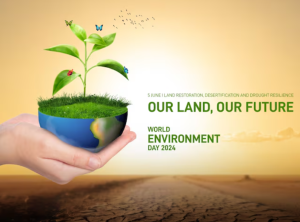The stories and voices that will help catalyse women’s empowerment in our society.
Has the women’s rights movement finally hit its stride in our country? To answer that question, we have to examine how change, particularly cultural change, happens. Large-scale cultural change begins from the inside and is usually organic in nature, with people, or a fraction of the people first adapting to these over time before it becomes a mass movement or habit. The psyche of a society is an inscrutable animal; it accepts and rejects in its own timeline and travels its own trajectory. The word ‘cultural’ itself is a composite, a sum total, so any protest against this would only be if it is forced, administered willy-nilly or feels too foreign.
By that yardstick, the recent uprising against sexual harassment can be viewed as an organic shift. Statistics indicate that a very high percentage of women experience assault or harassment at some point in their lives. The #MeToo phenomenon confirms what we always suspected. But the question remains whether it will have the same resonance or impact in India as in the West. Sexism is a global woe, with India, like any other country in the world, exhibiting patterns specific to itself.
There is convergence of experience in some ways. A short story published in the New Yorker in December 2017 went viral, primarily because of a jolting ending in which a woman who ends a relationship with a man has the verbal equivalent of acid thrown at her. In India, in the days when arranged marriages were the norm, families could take the fall for rejecting a suitor. But in a modern and more empowered era, Indian women who say no risk having acid hurled at them – either literally or metaphorically.
But, at many other levels, there are differences in what women need or seek when it comes to change differences dictated by geography, social class or more. The feminist ideals of those of us born into relative privilege are unlikely to resonate with a tea stall vendor or a household worker.
From time to time, these differences make us sit up and take notice. Several years ago, I went on a road trip with a group of female friends. We were happy at the chance to get in touch with our core identities as women, rather than as mothers, wives, daughters. We broke our journey at a guest house the first night and woke up the next morning to have breakfast before heading out again. Breakfast was served to us – by two undernourished and clearly underage girls. All of a sudden, our own struggle for empowerment paled in contrast to the life experiences of these girls.
Such incidents prompt us to question whether there is really a ‘one size fits all’ when it comes to feminism and women’s rights.
I believe real change will happen when we can put ourselves in the shoes of others. If we are lucky to have access to the tools and implements of change, then we should be able to use these to make a difference to those who don’t. The #MeToo movement will also reach new heights, I believe, when women who have not personally been victims of harassment add their voices to the fray.
Many writers have inserted themselves in the movement through their work. The themes and stories of contemporary fiction highlight female experience across eras and cultures. For example, ‘Pyre’ by Perumal Murugan, ‘The Kaunteyas’ by Madhavi Mahadevan and ‘Hotel Iris’ by Yoko Ogawa are all powerful stories that illustrate how women helping women (or not) can impact lives and outcomes.
There are also literary events organized purely to showcase feminist literature. These are important to shine a light on concerns beyond the traditional issues that mainstream literature festivals cover. With their niche focus, such events are better placed to explore all the aspects – good, bad and ugly – of being a woman in India.
Cultural change is spasmodic and seismic, happening as and when events enable it. In a book titled ‘I Want To Destroy Myself’, author Malika Amar Shaikh recounts her personal story with bravery and grit. For her the time was right to tell her story, and for readers like me it was the right moment to learn that no woman is alone.
I see the pushback against certain topics as a sign that the wheels of the movement are continuing to turn. Censorship of movies and books always exposes the nerve and pulse of a society; what people are really thinking and feeling. What we refuse to read or watch tell us what we truly fear. The pseudo sense of security that we wrap ourselves with at nights comes ripping off us when we react in a knee-jerk fashion. In a society that is moving towards gender equality, Indian women are becoming more and more aware of their rights, and are developing, rightly, a taste for independence, for higher education, for anything really that a man has access to. Men, on the other hand, stand to lose traditional advantages and are unsure of how much should be ‘allowed’. A woman wearing the pants is a statement of power but a man who wears the skirt at home is an image of weakness. When we can treat both expressions in the same positive vein, we will have made the transition to a truly gender equal world.
My most recent novel, ’The Girl Who Couldn’t Love’, has a heroine who doesn’t buy into the usual feminine images; she lives her life on her own terms, is shaped by her own sense of right and/or wrong. To me this is a step, however small, in the right direction and towards the culture of humanism – which in the end is the only culture that survives.
Shinie Antony
is an author and editor.




